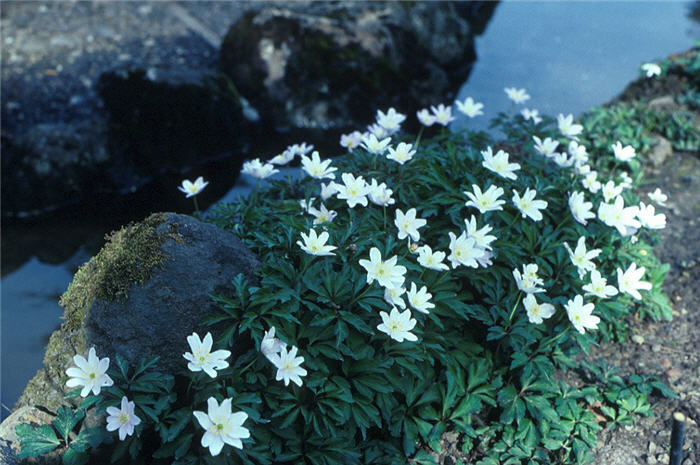| Botanical Name: Anemone nemorosa | |
| Common Name: Wood Anemone |

-
Anatomy
-
Culture
-
Design
Plant Type
Ground cover, Perennial, Bulb
Height Range
Under 1'
Flower Color
White
Flower Season
Spring
Leaf Color
Blue Green
Bark Color
n/a
Fruit Color
n/a
Fruit Season
n/a
Sun
Half, Shade
Water
Medium
Growth Rate
Slow
Soil Type
Clay, Loam
Soil Condition
Average, Rich, Well-drained
Soil pH
Acid, Neutral
Adverse Factors
Poisonous
Design Styles
English Cottage, Formal, Japanese, Mediterranean, Ranch, Woodland
Accenting Features
Showy Flowers
Seasonal Interest
Spring
Location Uses
Entry, Perennial Border, With Rocks
Special Uses
Naturalizing, Small Spaces
Attracts Wildlife
n/a
Information by: Stephanie Duer
Photographer: Linda Engstrom
Photographer: Linda Engstrom
-
Description
-
Notes
This small perennial grows by rhizomes, creating a little carpet of blue-green, deeply lobes leaves and absolutely bright white flowers 3 to 6 inches tall. Slow-spreading, it makes an attractive woodland groundcover. Generally planted as a bulb in the fall.
The anemone nemorosa grows best in slightly acidic, well-drained, rich soil, in part sun. Heavy or wet soils will cause it to be short lived. Well drained soil is the key. Best in part shade (avoid hot afternoon sun). Naturalize under trees and large shrubs. Plants begin to go dormant in summer as temperatures rise and tree leaves reach mature size (more shade). Established plants tolerate some drought when dormant. Typically available as bulbs...set rhizomes 2" deep and 6-8" apart.